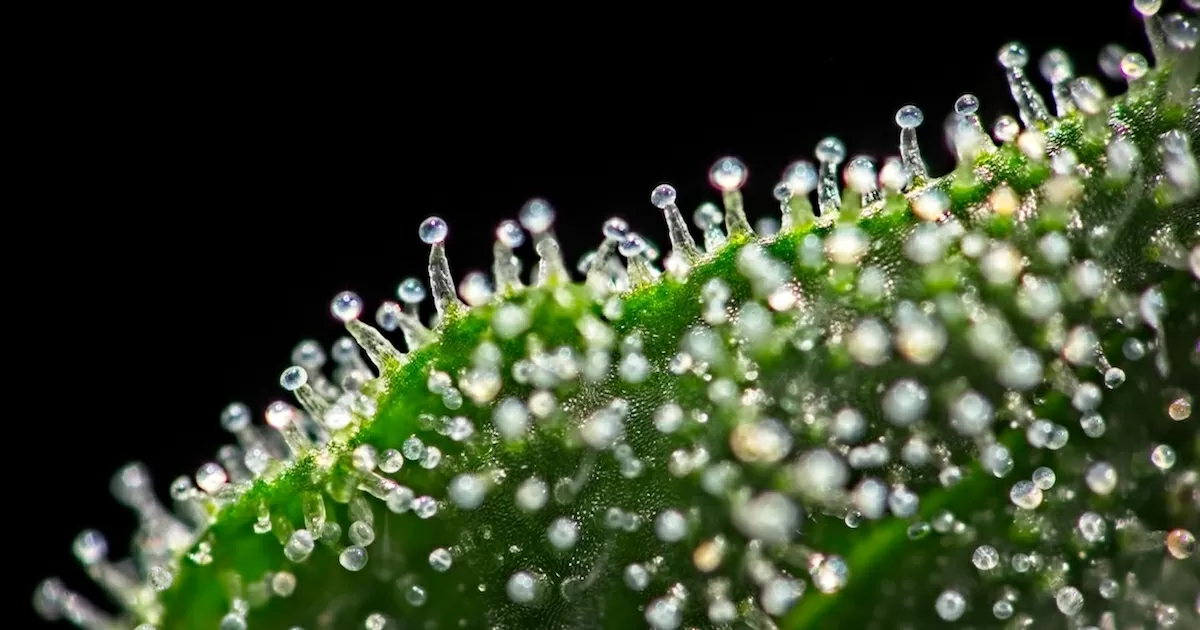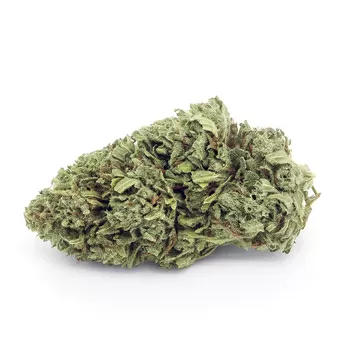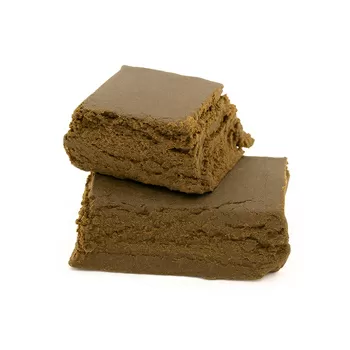Trichomes are arguably the most important part of the cannabis plant. When you look at your cannabis, and you see a thin, snow-like coating around the leaves and flowers, it's a good indicator that you've got some high-quality stuff.
Cannabis trichomes may be foreign to some, but it's widely agreed around the world that the more trichomes, the better the cannabis. In this article, we're going to discuss cannabis trichomes—what they are, why they're important, and how to handle them.
Read on to learn more.
What Exactly Are Cannabis Trichomes?
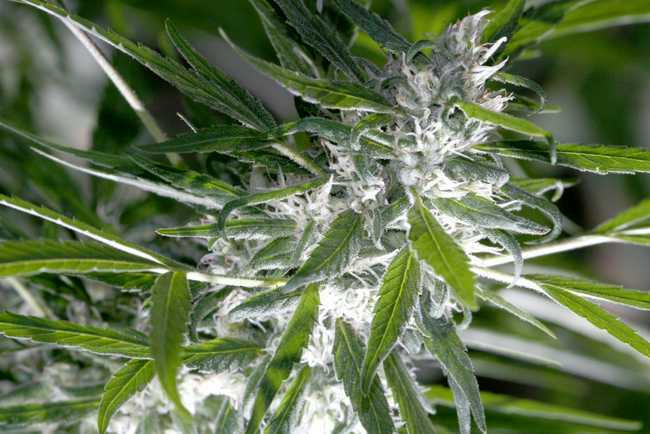
"Trichome" is a term that comes from the Greek Tríchōma, meaning "hair" or "hair growth." Trichomes are the resinous, microscopic crystalline filaments (or the tiny little hairs) found on the cannabis leaves and flowers. They are the gatekeepers of the cannabis plant's cannabinoids and other chemical compounds—but we'll get to that later.
Of course, cannabis isn't the only plant that produces trichomes. Trichomes can be found on various plants, including algae, lichens, and other protist organisms. Their primary purpose is to protect the plant from UV rays, wind, heat, frost, fungal growth, and natural predators. In carnivorous plants such as the Venus Flytrap, the trichomes help to lure in and trap prey for consumption.
Trichomes are only seen with a microscope's help, although trichomes will give cannabis a frosted appearance in higher quantities. If you've ever heard cannabis buds described as "frosty," it's in reference to the plant's quantity of trichomes. Up close, they look like little shiny, mushrooms; and on cannabis, depending on the stage of their lifecycle, they'll appear to be clear, milky white, or brownish.
Additionally, trichomes have enabled us to collect kief and create hash, wax, shatter, oil, and isolates. Not only are trichomes frosty, but they're also sticky once broken open due to their resinous nature. This is why it's important to handle your cannabis with care, as trichomes are incredibly fragile.
You'll encounter several types of trichomes on the cannabis plant varieties. The trichomes most commonly found on the marijuana and hemp varieties include the bulbous, capitate sessile, and capitate-stalked trichomes.
Here's a closer look at each type:
Bulbous Trichomes
At only a width of 10 microns, bulbous trichomes are the smallest of all the trichomes. This makes them nearly invisible, yet they appear across the entire surface of the cannabis plant. These glandular trichomes still contain cannabinoids and other chemical compounds. However, due to their size, the volume is incredibly limited.
Capitate-Sessile Trichomes
Capitate-sessile trichomes are significantly larger than their bulbous counterparts. Their width ranges from 20-30 microns, giving them a short base and small head. Capitate-sessile trichomes contain a higher volume of cannabinoids and chemical compounds as well, but they're still difficult to see.
Capitate-Stalked Trichomes
Capitate-stalked trichomes are the largest glandular trichomes, ranging in width from 50 to 100 microns and from 200 to 300 microns in vertical length. The capitate-stalked trichomes are responsible for the "frosty" appearance of your cannabis Cannabis, the ultimate guide as they are more visible to the naked eye.
They also produce and hold the bulk of the cannabinoids and chemical compounds.
Simple Unicellular Trichomes
The simple unicellular trichomes can be found on both the lower and upper sides of your cannabis leaves. They differ from the above three trichomes in that they aren't mushroom-shaped. Simple unicellular trichomes are non-glandular, microscopically thin hairs. They don't contain any cannabinoids or chemical compounds.
These trichomes are the first line of defense against predators. They also offer minimal protection against the elements.
Cystolythic Trichomes
Cystolithic trichomes are also non-glandular and are similar in appearance to the simple unicellular trichomes. The only difference is that they're slightly curved in shape, resembling that of an animal claw. These trichomes primarily protect the plant from the elements as well as predators and fungus.
Antherial Sessile Trichomes
Antherial-sessile trichomes are also glandular trichomes, second in size to the capitate-stalked trichomes. With a width of 80 microns, these trichomes also produce and hold a significant volume of cannabinoids and chemical compounds.
Why Cannabis Trichomes Are Important
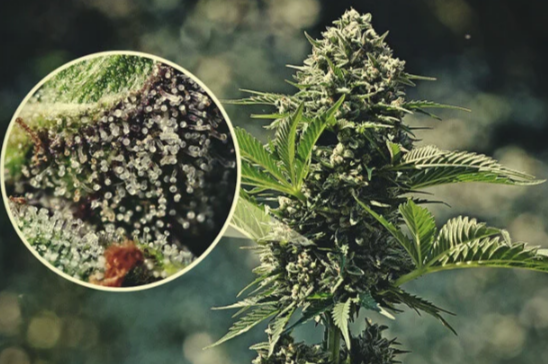
Cannabis is a rather complex plant. As we mentioned earlier, trichomes are the gatekeepers of the cannabis plant's cannabinoids and other chemical compounds. They also protect the plant as it flowers and becomes more vulnerable to predators, fungus, and the elements.
While the entire plant contains the full list of cannabinoids and chemical compounds, the highest concentration collectively develops and synthesizes within the trichomes. There are well over 100 identifiable cannabinoids in the cannabis plant, and they're primarily stored within the spherical resin heads of the glandular trichomes.
Cannabinoids, namely THC and CBD, interact with our endocannabinoid system (ECS) to regulate our bodies. THC is psychoactive while CBD is non-psychoactive, and both cannabinoids provide a laundry list of therapeutic and pharmacokinetic benefits. Even if the only thing you're after is the euphoric high that marijuana offers, knowing the immense THC concentration within the plant's trichomes should be enough to help you understand their importance.
However, there's more to the story than just the cannabinoids. That story involves the terpenes and flavonoids.
Terpenes
Terpenes are another chemical compound found throughout the various plant life on this Earth. Terpenes are what give plants their intoxicating aromas. They serve to attract pollinators to flowers as well as a deterrent to predators.
The piney smell of evergreens, the citrusy smell of lemons and oranges, the floral musk of lavender—that's all the work of terpenes.
Terpenes also have therapeutic benefits, which is why there's a market for essential oils and aromatherapies. In cannabis terpenes work the same as in any other plant. They provide specific characteristics such as the flavour and scent profiles to each strain.
Additionally, terpenes partake in the synergistic phenomenon, otherwise known as the "entourage effect." In short, therapeutic terpenes enhance the cannabinoids' work by binding with receptors and stimulating certain neurotransmitters' release in the brain.
For example, limonene is a citrusy-smelling terpene. Limonene is known for its mood-boosting and energizing effects, whether used in an essential oil diffuser or a sativa strain of cannabis.
Flavanoids
Flavanoids, also known as cannaflavins, are the phytonutrients within the cannabis plant. They're responsible for each cannabis strain's colour, as well as its taste and smell.
Flavonoids, in general, have powerful antioxidant properties. They help regulate cellular activity and fight off free radicals, so your body can function more efficiently. They're also known for their anti-inflammatory, antiviral, antibacterial, analgesic, anti-cancer, anti-depressant, and neuroprotective effects.
The cannaflavins specific to the cannabis varieties pack in the above effects as well. They take part in the entourage effect to work synergistically with the cannabinoids and other chemical compounds. The overall result is an enhanced effect of all the cannabinoids and chemical compounds with the added benefit of cellular protection.
Cannabis Trichome Formation
Trichomes are on a clock of their own. Their lifecycle technically begins as soon as the cannabis plant starts to flower. However, the non-glandular, more protective trichomes will appear before the flowering begins.
Once the cannabis flowers start blooming, plastids and vacuoles begin to form. Vacuoles are a single-cell membrane responsible for synthesizing the sugars, water, and salts in the cannabis plant to help form the trichomes. Plastids are responsible for transporting the plant's chemical compounds through the vacuoles.
The plastids also contain the pigments used during photosynthesis, which is also responsible for the trichomes' colour changes. These colour changes also serve as an indicator of when to harvest cannabis trichomes.
When the cannabis trichomes first form around the flowers, they have a sparkly appearance. However, a closer look under the microscope will show that the trichomes are still clear at this stage. Clear trichomes are a sign that cannabinoid production has not started yet, which means it's not time to start harvesting.
Within two weeks, the trichomes should start changing to a milky-white colour (or cloudy). Within another two weeks, they should change to an amber colour. Once the cannabis trichomes are all evenly milky-white throughout, harvesting can begin.
The perfect time to harvest is when half the trichomes are still milky-white, and the other have are amber. It's really a personal preference, but if you wait too long and all the trichomes begin to turn to an amber-brown colour, you'll lose a good amount of THC potency.
Cannabis Trichome Production Tips
If you're growing cannabis and want to ensure you have optimal production of trichomes, it's important to be aware of just how delicate they are.
One or more of the following stressors are enough to ruin an entire harvest:
- Extreme heat
- Light burn
- Contamination
- Over-handling
- Natural Degradation
You must have the right balance of light, space, temperature, and nutrients to produce a healthy plant that's robust in cannabis trichomes. This goes for producing both CBD and THC latent trichomes.
Handle With Care
Trichomes are the key to producing high-quality cannabis and cannabis products. Remember, cannabis trichomes are delicate, so the entire plant should be handled—and stored—with care.
If you're searching for high-quality CBD hemp products, check out our weed shop. Or, contact us with any cannabis-related questions you have.
 Italiano
Italiano Español
Español English
English Français
Français Deutsch
Deutsch